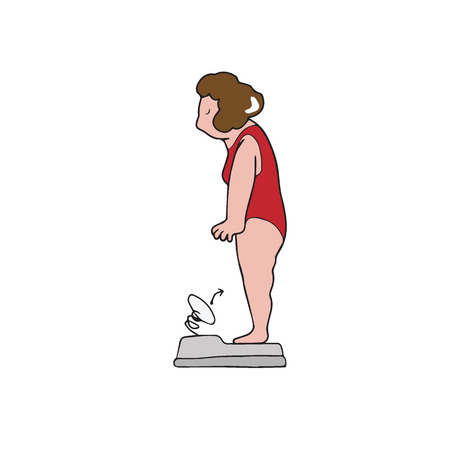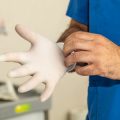1. Introduction to Shoulder Injuries
Shoulder injuries are a common concern across the United Kingdom, affecting people from all walks of life and particularly impacting our ageing population. The shoulder is one of the most mobile and complex joints in the body, making it susceptible to a variety of injuries such as rotator cuff tears, frozen shoulder (adhesive capsulitis), bursitis, and dislocations. In Britain, these injuries often result from everyday activities like gardening, DIY projects, or even enjoying a game of cricket or bowls. For many older adults, wear and tear from years of activity can lead to degenerative conditions such as osteoarthritis or tendinopathy. The consequences of shoulder injuries extend far beyond physical discomfort; they can significantly restrict independence, limit participation in cherished hobbies, and make simple daily tasks—like reaching for a kettle or putting on a coat—challenging. With the UK’s demographic gradually shifting towards an older population, addressing shoulder health has become increasingly important. Understanding the causes and impact of these injuries within the context of British lifestyle is the first step towards effective recovery and maintaining quality of life.
Physiotherapy: A Cornerstone of Recovery
Physiotherapy stands as a pivotal component in the rehabilitation of shoulder injuries, providing both clinical expertise and compassionate support throughout a patient’s journey to recovery. In the UK, physiotherapists play a fundamental role within multidisciplinary teams, particularly through NHS pathways and community-based care options. This approach ensures that individuals receive evidence-based interventions tailored to their unique needs, whether they are recovering from acute trauma, post-surgical procedures, or chronic shoulder conditions.
The typical NHS pathway for shoulder injury management begins with an initial assessment by a GP or A&E clinician, who may refer patients directly to physiotherapy services. Physiotherapists conduct comprehensive assessments to identify functional limitations and pain triggers, developing personalised treatment plans aimed at restoring mobility and strength. Community-based care is also widely accessible across the UK, allowing patients to continue their rehabilitation closer to home with ongoing professional guidance. This not only supports physical recovery but also enhances emotional wellbeing by fostering independence and confidence in daily activities.
| Care Setting | Key Physiotherapy Role | Benefits for Patients |
|---|---|---|
| NHS Outpatient Clinics | Initial assessment, structured exercise programmes | Specialist input; access to equipment and group classes |
| Community-Based Care | Home visits, self-management education | Personalised support; promotes autonomy in familiar environments |
| Virtual/Telehealth Services | Remote monitoring, digital exercise guidance | Convenience; continuity of care during travel or shielding periods |
Through these varied settings, UK physiotherapists remain central to holistic recovery, blending clinical knowledge with genuine empathy. By navigating NHS referral processes and offering community resources, they empower individuals to regain function and quality of life following shoulder injury. This collaborative approach underscores the importance of accessible, evidence-based physiotherapy for all stages of shoulder rehabilitation.
![]()
3. Evidence-Based Treatment Approaches
When supporting shoulder recovery, it is essential to rely on physiotherapy interventions that are grounded in strong evidence and tailored to individual needs. According to the latest guidance from the National Institute for Health and Care Excellence (NICE) and Chartered Society of Physiotherapy (CSP), a combination of manual therapy, exercise prescription, and patient education forms the cornerstone of effective treatment.
Manual Therapy
Manual techniques, such as joint mobilisation and soft tissue manipulation, are often recommended as part of a comprehensive shoulder rehabilitation programme. These hands-on approaches can help restore mobility, reduce pain, and facilitate functional improvements when delivered by skilled practitioners. NICE guidelines highlight that manual therapy should be used alongside, rather than in place of, other interventions.
Exercise Prescription
Therapeutic exercise remains central to evidence-based shoulder rehabilitation in the UK. Programmes typically include a blend of range-of-motion exercises, strengthening routines targeting the rotator cuff and scapular muscles, and progressive loading activities. Best practice recommends that exercises are individualised, regularly reviewed, and adjusted according to patient progress and comfort levels.
Patient Education
Empowering patients through education is a key element noted in UK clinical guidelines. Providing clear information about shoulder anatomy, the expected recovery process, activity modification, and self-management strategies helps individuals take an active role in their rehabilitation journey. This approach not only fosters confidence but also supports adherence to home exercise programmes.
Multidisciplinary Collaboration
The best outcomes are achieved when physiotherapists work closely with GPs, orthopaedic specialists, and occupational therapists where appropriate. This collaborative approach ensures holistic care, especially for those living with complex or long-term conditions.
Personalised Care for Every Patient
In summary, evidence-based physiotherapy for shoulder recovery in the UK is guided by national standards that emphasise safe, effective, and compassionate care. By combining manual therapy, tailored exercise plans, education, and multidisciplinary support, physiotherapists help patients regain function and improve quality of life in a way that respects each individuals pace and preferences.
4. Personalised Rehabilitation Plans
In the journey of shoulder recovery, one size certainly does not fit all. Physiotherapists in the UK are increasingly recognising the importance of personalised rehabilitation plans, which take into account each patient’s unique circumstances and cultural background. By considering individual needs, home environments, support networks, and the distinct preferences found within British society, these tailored plans can make a profound difference in both motivation and outcomes.
Understanding Individual Needs
Effective rehabilitation begins with a thorough assessment of the patient’s medical history, lifestyle, and specific goals. For example, someone living alone in a rural area may require different support than a person residing in a bustling urban community with easy access to local services. The ability to adapt exercises for use at home—particularly when NHS resources are stretched or follow-up appointments are less frequent—ensures continuity of care and empowers patients to take an active role in their recovery.
The Influence of Home Environment and Support Networks
The British home environment varies greatly, from compact city flats to countryside cottages. A tailored plan should consider available space for exercises, accessibility, and any adaptive equipment that might be required. Furthermore, support networks—whether family members, friends, or community carers—play a vital role. Involving loved ones not only improves adherence but also fosters encouragement throughout the rehabilitation process.
| Consideration | Urban Setting | Rural Setting |
|---|---|---|
| Exercise Space | May be limited; focus on adaptable routines | Potentially more space; can use outdoor areas |
| Support Network | Diverse; friends or neighbours often nearby | Family-based; may rely on visiting carers |
| Access to Services | Closer to NHS clinics & resources | Longer travel times; telehealth options useful |
Cultural Preferences in British Society
British values such as privacy, independence, and community spirit all have a part to play in shaping rehabilitation plans. Some patients may prefer private sessions at home rather than group classes, while others thrive on the social interaction offered by community-based physiotherapy services. Respecting individual preferences around communication style—for instance, using clear language without unnecessary jargon—helps build trust and confidence.
Navigating Barriers Together
A gentle and supportive approach is essential. Physiotherapists act not only as clinical experts but also as companions on the road to recovery, providing reassurance and adapting plans as circumstances change. Whether it’s finding creative solutions for at-home exercises or linking patients with local support groups, personalised rehabilitation is about working together towards meaningful progress.
5. Multidisciplinary Support and Long-Term Management
Shoulder recovery is rarely a journey undertaken alone. In the UK, effective rehabilitation often relies on a multidisciplinary approach, where physiotherapists work closely with GPs, occupational therapists, and family members to ensure holistic care. GPs play a pivotal role in coordinating referrals and monitoring overall health, helping to manage any underlying conditions that might influence recovery, such as diabetes or arthritis. Occupational therapists are invaluable in supporting patients to regain independence in daily activities—whether it’s dressing, cooking, or returning to work—by providing practical adaptations and advice tailored to each individual’s lifestyle.
The NHS offers a range of local support services designed to complement physiotherapy, including community-based rehabilitation teams and pain management programmes. Many local NHS trusts also provide group exercise classes or self-management workshops, which can help maintain motivation and encourage social connection during what can sometimes feel like a lonely process. Family involvement is equally important: loved ones offer emotional encouragement and can help reinforce home exercise routines prescribed by your physio.
Engaging this network of support not only enhances clinical outcomes but also nurtures long-term wellbeing. By drawing on the strengths of collaborative care within the NHS framework and tapping into local resources across the UK, patients are empowered to take an active role in their own recovery—one gentle step at a time.
6. Empowering Patients: Education and Prevention
The journey to shoulder recovery does not end with clinical treatment; rather, it flourishes when patients are actively empowered to manage their own health. Physiotherapists in the UK play a pivotal role in equipping individuals with the knowledge and skills needed to navigate daily life confidently, prevent relapses, and maintain independence within their communities.
Self-Management: Building Confidence Through Knowledge
Education is at the heart of effective self-management. Physiotherapists dedicate time to ensure that patients understand their shoulder condition, the rationale behind each exercise, and how to modify activities safely. By fostering open dialogue and addressing concerns in plain English, therapists help patients gain confidence in performing prescribed exercises at home, recognising early warning signs, and seeking timely support if needed.
Relapse Prevention: Sustaining Progress
Preventing recurrence of shoulder problems requires a proactive approach. Evidence-based strategies include teaching patients ergonomic principles relevant to daily British life—such as adjusting workspaces or lifting shopping bags correctly—and encouraging regular movement breaks during prolonged periods of sitting. These practical tips are tailored to suit individual lifestyles, ensuring that prevention becomes part of everyday routine rather than an added burden.
Promoting Active, Independent Living
Beyond the clinic, physiotherapists encourage participation in community-based activities like walking groups or local sports clubs, which are integral to UK culture. Emphasis is placed on setting realistic goals and gradually increasing activity levels. This holistic approach nurtures not only physical recovery but also social connections and emotional wellbeing, empowering individuals to lead active, fulfilling lives as valued members of their communities.
Ultimately, the role of physiotherapy extends far beyond hands-on treatment—it is about inspiring hope, building resilience, and supporting people every step of the way towards lifelong independence and health.


